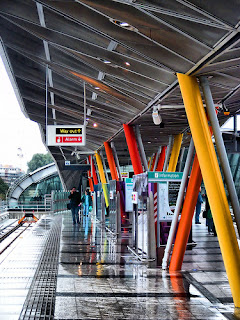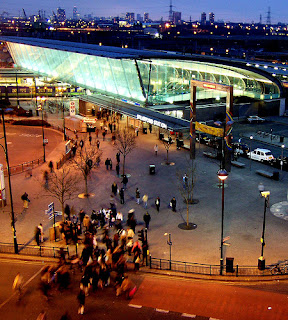Before our kick off meeting next Friday, there are a few things we should discuss.
Firstly, potential study locations.
Studying extremes of negative and positive spaces (and feelings) will most likely be easier to map and give us more conclusive results. It might also be interesting to consider newly developed public spaces, to see how recent designs have taken detail into account.
Working from personal experience, places which have made me feel at ease or on edge, and who's memory has stuck.
Here's a shortlist with accompanying photos.
Greenspaces
Mile End Park: newly developed, some really distinctive details, such as signage, use of colour and tiling. It went through a very thorough consultation process and had a strong vision behind it, co-ordinated by the environment trust. It's use changes quite dramatically throughout the park, some areas feeling very welcoming, and others more menacing. I think this is an 'open' park that isn't closed at night.
Clissold Park: very varied uses, mixed surroundings with derelict buildings. Very well-used park, but is locked and can feel unnerving to walk past at night.
Newington Green: small greenspace surrounded by traffic, but yet feels welcoming and is well used since recent redevelopment.
Edward Square: inner city green space redeveloped with poem by andrew motion as public art in consultation with the local community. Near Caledonian Road, not an area considered to be that pleasant.
There's quite a good link to London Parks on:
http://en.wikipedia.org/wiki/Parks_and_open_spaces_in_London
Commercial Areas
Picadilly Circus: a tourist attraction yet not a space that encourages you to spend any time.
Tottenham Court Road, New Oxford Street Crossing: smells bad, looks bad, sounds bad.
A corner that has no heart.
Monmouth Street / Seven Dials /Neal's Yard: recently repaved to alter hierarchy of cars to pedestrians. People often pass the time there, including sitting in effectively the middle of a roundabout, often stood outside drinking. One of the few areas in London where benches are actively brought onto the pavements by shop owners.
Transport Interchanges
Barking Station: can feel unnerving spending time there even during the day. Heavily littered outside, ticket touts, drunks, addicts loitering, large groups hanging around at night, dark platforms, ferrets on string (this is true!), chicken bones and greasy pavements.
Stratford (bus and train station) : a new, spacious and well designed station. However, I know many people who don't like going to Stratford.


